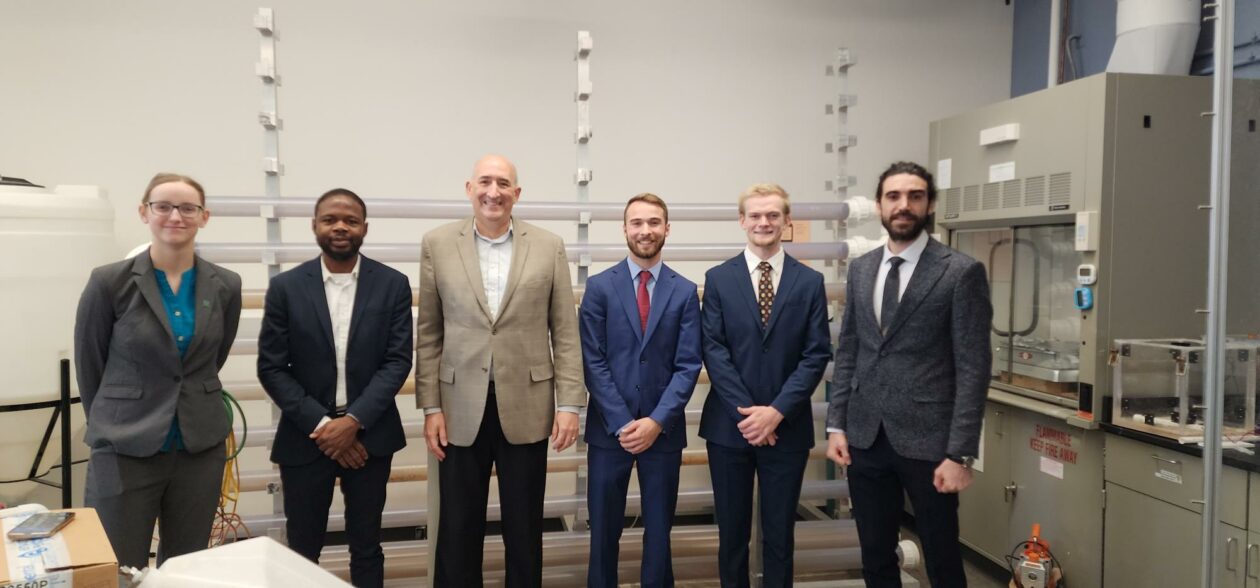Could blue-green algae lead to humans’ sustained presence on the moon?
Posted by Greg Edwards

The Missouri S&T Lunar Biotech team earned second-place accolades in the Lunar Life Odyssey 2 challenge. The team, from left, includes Hannah Keely, Peter Obidi, Dr. David Bayless (team advisor), Josh Hickman, Jesse Fletcher and Alireza Fallahi. Photo courtesy of Jesse Fletcher.
Will bacteria that is commonly called “blue-green algae” growing on a window screen eventually play a major role in humans having a sustained presence on the moon?
A group of student researchers from Missouri S&T thinks so, and their Lunar Biotech team’s project was recognized for having one of the top innovations at the Lunar Life Odyssey challenge, sponsored by Jacobs Space Exploration Group — one of NASA’s primary contractors.
“For this challenge, our team was able to do things that you don’t see in everyday life,” says Jesse Fletcher, a junior in chemical engineering from Springfield, Missouri. “We had to consider how the algae would be able to grow under the specific conditions found on the moon, such as its gravity and atmosphere.”
Fletcher says the blue-green algae, which is actually a cyanobacteria, was part of a bioreactor the team created that could potentially recycle human waste, wastewater and gases into usable resources, such as oxygen, potable water and proteins for potential consumption.
The S&T team earned second-place accolades in November 2023 for the Lunar Life Odyssey challenge, which was focused on developments to support humans eventually living on the moon.
S&T’s project was similar to technology that professionals have already developed for living in space, but Fletcher says the team’s work would be a significant improvement to what is already in use.
“Similar technology already exists and is used on the International Space Station,” he says, “but it is not biotech, and it is heavier and requires more energy to transport and operate. Our work could make space travel — and one day having a sustained presence on the moon — more efficient and less expensive.”
The Lunar Biotech team has been developing this project for several years, and Fletcher says he is excited to see this work continue, and he hopes to see even more members join the team.
“I wanted to do undergraduate research ever since I came to Missouri S&T, and this team provides me with unique experiences that test my critical thinking skills and help me be a better engineer,” he says. “It is a great group that is working to solve important problems.”
Other members of the team include:
- Alireza Fallahi, a Ph.D. student in mechanical engineering from Tehran, Iran.
- Joshua Hickman, a December graduate with a bachelor’s degree in mechanical engineering from Wright City, Missouri.
- Hannah Keely, a December graduate with a bachelor’s degree in mechanical engineering from Holts Summit, Missouri.
- Peter Obidi, a Ph.D. student in mechanical engineering from Abuja, Nigeria.
Dr. David Bayless, professor and chair of mechanical and aerospace engineering, serves as the team’s advisor. To learn more about the team, contact Bayless at dbayless@mst.edu.
Leave a Reply